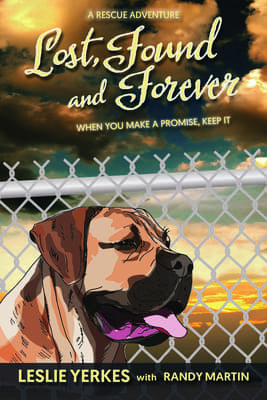
“If you don’t know what you want to achieve in your presentation
your audience never will.”
— Harvey Diamond
My writing style has many tells. My long-time editor and wordsmith friend, Randy Martin, smiles when he receives my weekly blog to edit and format. He knows every one of my quirky writing habits.
I love alliterations. I hear words in my head and a when the consonants start with the same letter and sound, it’s like music in my head.
I also like to share thoughts in groupings of three. I don’t know when this started in my writing but now it is a habit that is hard for me to break.
• Is there power in the number 3?
Lastly — though I am sure that I have more quirky tics both verbally and in my writing — is that I love metaphors.
I have learned that metaphors —like good stories — are sticky, memorable, and easily repeatable. Metaphors create mind pictures. My learning style is dominated by my visual modality — that may contribute to why I think in metaphorical mind pictures.
I appreciate that a good metaphor can help to describe complexity in a way that makes it more friendly. If you thoughtfully consider your audience and their cultural preferences, you can frame a concept that makes it more understandable.
I have observed that a good metaphor can take something that might spark feelings of fear or resistance and make the content seem less scary, more friendly, and accessible to all.
For years I have repeated a metaphor for change when leaders need to communicate where and how a workforce needs to move in order to ensure the well-being of the organization. I continue to use it because I can see the immediate understanding that is translated. My metaphor helps the leader know how to frame conversations, where to spend their time, and how to move an organization and its constituents forward.
(I am happy to share my change train metaphor with you anytime.)
But today, it is a new metaphor that I am happy to share.
A colleague was wondering how to start a conversation to engage a coworker and the workforce in a direction that was understood, anticipated, and necessary. Yet, full commitment to the initiative was not forthcoming.
What came to my mind on how to engage others in something new was, Set the Table.
I arrived at the metaphor of hosting and sharing a meal because this is one of the best ways to solidify a relationship. Marcus Buckingham in his book ‘Love + Work’ recommended breaking bread together to reestablish connection. I concur enthusiastically!
As I shared my mind picture metaphor, it grew in application.
To host a good conversation — think meal — you need to decide what to serve, how to make the invitation, how to set the table, allow for choices in personal preferences, and make it good. And don’t forget dessert!
In planning the menu, consider the needs of the person(s) you are hosting. Infuse the menu with choice. Don’t assume preferences. Have something for everyone.
In setting the table, I take my inspiration from my Swedish colleagues. Swedes know the importance of time at the meal table where good conversations and connections happen. Swedes use a tablecloth, always have flowers on the table, possibly a candle, the setting is thoughtful, beautiful, and pleasing. All of which communicates to the guests how important they are to you and to the conversation. Where will you host your guests? The location says a lot about your use of power.
Every step in the journey of hosting is about respect and offering inclusion.
How — when ‘Setting the Table’ for an important conversation to promote engagement — can you use the organization’s values to guide you?
Give your guests agency to choose from the menu. Your menu is about the agenda of items that need to be discussed. Let them choose the starting point as the metaphorical meal is going to include all the ‘courses’ of the menu. You might think of a good question that will start the conversation as an ‘appetizer’ that prepares everyone for a good ‘meal’.
I always have to learn not to dominate the conversation and let a good exchange of give and take and speaking and listening happen naturally. If I am really hosting a meal and conversation (which is always a good idea), I remember to put food in my mouth. That slows me down and creates the perfect quiet for the other person. It is important to get comfortable using pause and silence.
Do your best to make the first meal a great meal. If you have achieved starting off strong — where individuals feel seen, heard, and included — they will come a second time when invited.
When designing a kick-off meeting for any initiative, I have often said, “Let’s make it a good meal so that they will come to the table enthusiastically every time that they are invited.”
Lastly, don’t forget dessert. Always end the meeting with something sweet to remember the connection. If you have started with a metaphorical “grace of appreciation’ end the exchange with a thank-you.
When others experience grace, gratitude, and the invitation to contribute in the form of a conversation in a very authentic way, it is rare that they will hold onto their resistance because the meal included the opportunity for them to express their thoughts, feelings, concerns, fears, aspirations, and more.
The approach to engagement takes time and intentional effort. However, you will recover the time when the pulling together starts to happen.
Each step of the metaphor encourages you to thoughtfully prepare.
• Does this metaphor resonate with you?
• Do you have a favorite metaphor that helps you in your role and do your work?
• If you had to describe your work life or life-life right now metaphorically what picture would you paint?
I am working a metaphor right now that has been shared with me recently too frequently to ignore.
I am in my ‘Putting my own oxygen mask on first’ mode right now, thanks to the encouragement of loving friends and colleagues. The next blog might explore what that looks like, feels like, and acts like for a type A, compassionate person who doesn’t know how to walk past the needs of other.
Please share your stories and metaphors with me. I take my inspiration from friends like you.
Leslie
“Metaphor theory is like Mark Twain:
both seem so simple upon first introduction;
but, before we know it,
we are in much deeper.”
— John Bird





Recent Comments